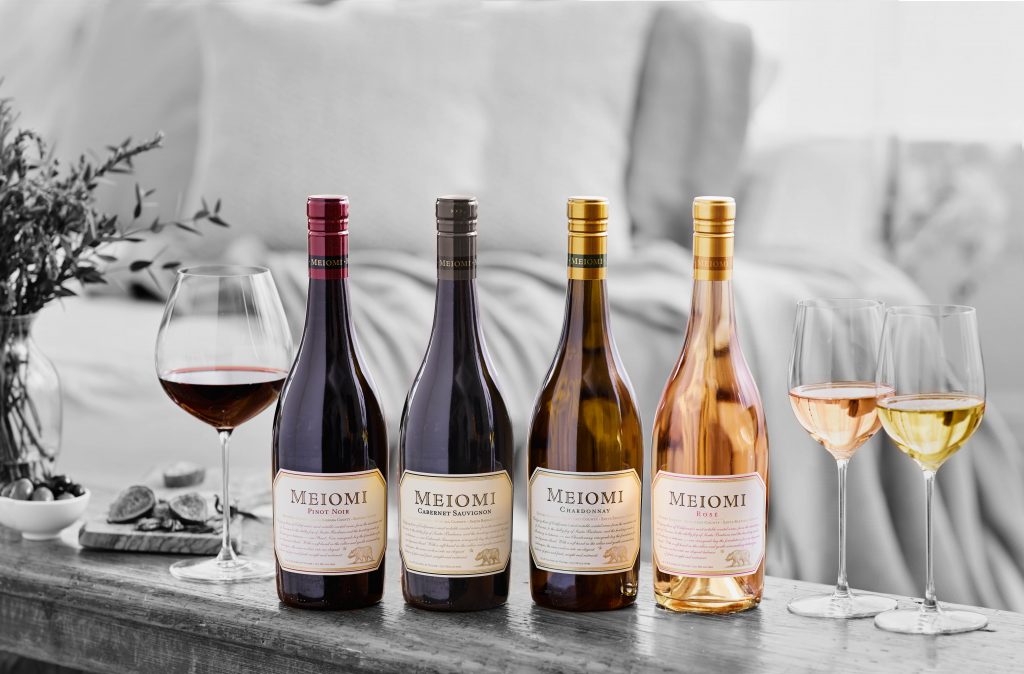By Karen A. Jamrog
Before the rush of the holidays arrives, it’s nice to take the time to enjoy favorite autumn traditions while also exploring new pleasures to share with family and friends in the coming months. Meiomi wines, representing a longstanding commitment to excellence, fit the bill.
Meiomi makes elegant wines crafted from grapes grown in California’s premier coastal wine regions. The quality of the grapes reflects the diverse microclimates that surround them, with rocky soils, cool mornings, warm afternoons, and ocean air imbuing each bottle of Meiomi wine with perfect balance, complexity, and rich flavor.
Joe Wagner, a fifth-generation winemaker, established Meiomi in 2006 with a goal of creating Pinot Noir that was accessible, reliable, and representative of excellent coastal California wines. Fittingly, Wagner chose the name “Meiomi” for the winery because it means “coastal” in the language of the area’s indigenous Wappo and Yuki tribes. Today, Meiomi’s offerings include something for every wine lover: the brand’s flagship Pinot Noir, Rosé, Chardonnay, sparkling wine, and most recently, a Cabernet Sauvignon.
Following its initial release in 2009, Meiomi Wines quickly became a hit with consumers, selling 90,000 cases in 2010 and skyrocketing to nearly 600,000 cases in 2014.
Meiomi has received wide acclaim as a flavor-forward wine, a characteristic owing largely to the tri-appellation blends that go into the brand’s wines. Drawing from the winery’s vineyards in Sonoma, Monterey, and Santa Barbara counties, which are considered ideal locations for producing exemplary grapes, Meiomi winemaker Jason Becker crafts fresh-tasting wines that are complex, richly layered, and exceptionally balanced.
“While many wineries source grapes from California, Meiomi Wines truly symbolize the character of some of the most sought-after vineyards with soils that allow for optimum growth and ripening,” Becker says. “We use some of the best grapes from the cool-climate vineyards and blend them into the best expression of each vineyard to create a harmoniously balanced and rich style.” The winery has demonstrated its loyalty to the region in various ways, such as recently donating $100,000 to the National Forest Foundation to aid wildfire recovery and prevention.
After starting out as an engineer, Becker found himself drawn to winemaking while working at a small winery in the Santa Cruz Mountains. He went on to attend Cal Poly San Luis Obispo, where he double-majored in wine and viticulture and agricultural business.
“Winemaking allows me to use both my analytical and creative side to make great wines,” he says.
Clearly, Becker takes advantage of the full spectrum of his skills at Meiomi as he creates wines in styles that aren’t typically seen for certain grapes. “The most important skill I’ve brought to Meiomi,” he says, “is to keep an open mind.”
Ten-plus years of experience have equipped Becker with innovative tools and techniques to craft wines of the highest quality. He specially ferments Meiomi’s Pinot Noir to ensure balanced extraction of flavor, aromatics, structure, and color, and allows the wine to age in 100% French-oak barrels, which produces sweet and structural influences that Becker says “mingle seamlessly with the rich fruit and ripe tannins.”
To make Meiomi’s newest addition to its line-up, its Cabernet Sauvignon, Becker applies traditional Bordeaux winemaking practices with “a little bit of New-World ingenuity.” Aging the wine in French and American oak brings out the ripeness of the fruit to create a dark, rich wine that beckons with enticing aromas of baking spices.
Meiomi’s Chardonnay and delightfully dry Rosé also have alluring aromatics, along with scrumptious flavors and mouthfeel. The Chardonnay is luxurious with pineapple and lemon peel enhanced by scents of honey and almonds, while the Rosé delivers mouthwatering flavors of juicy strawberry and watermelon, laced with delicate aromas of rose petal and citrus.
“I love what I get to do with Meiomi,” Becker says. “As a winemaker, my priority is to always respect the fruit and craft a wine that is truly a reflection of the grapes and the area they came from. It is all about creating a sense of place that transports drinkers with every sip.”
